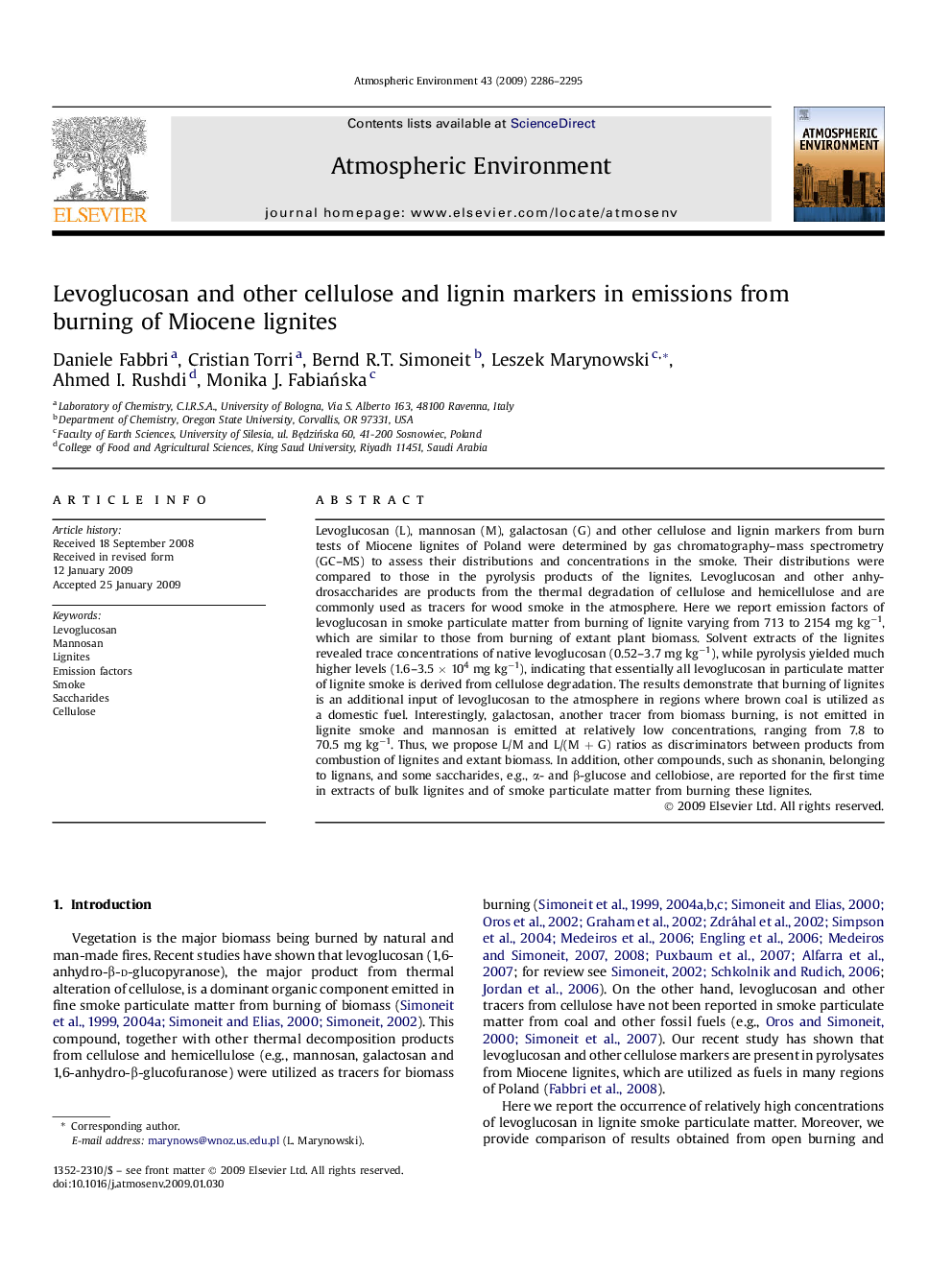| Article ID | Journal | Published Year | Pages | File Type |
|---|---|---|---|---|
| 4441414 | Atmospheric Environment | 2009 | 10 Pages |
Levoglucosan (L), mannosan (M), galactosan (G) and other cellulose and lignin markers from burn tests of Miocene lignites of Poland were determined by gas chromatography–mass spectrometry (GC–MS) to assess their distributions and concentrations in the smoke. Their distributions were compared to those in the pyrolysis products of the lignites. Levoglucosan and other anhydrosaccharides are products from the thermal degradation of cellulose and hemicellulose and are commonly used as tracers for wood smoke in the atmosphere. Here we report emission factors of levoglucosan in smoke particulate matter from burning of lignite varying from 713 to 2154 mg kg−1, which are similar to those from burning of extant plant biomass. Solvent extracts of the lignites revealed trace concentrations of native levoglucosan (0.52–3.7 mg kg−1), while pyrolysis yielded much higher levels (1.6–3.5 × 104 mg kg−1), indicating that essentially all levoglucosan in particulate matter of lignite smoke is derived from cellulose degradation. The results demonstrate that burning of lignites is an additional input of levoglucosan to the atmosphere in regions where brown coal is utilized as a domestic fuel. Interestingly, galactosan, another tracer from biomass burning, is not emitted in lignite smoke and mannosan is emitted at relatively low concentrations, ranging from 7.8 to 70.5 mg kg−1. Thus, we propose L/M and L/(M + G) ratios as discriminators between products from combustion of lignites and extant biomass. In addition, other compounds, such as shonanin, belonging to lignans, and some saccharides, e.g., α- and β-glucose and cellobiose, are reported for the first time in extracts of bulk lignites and of smoke particulate matter from burning these lignites.
